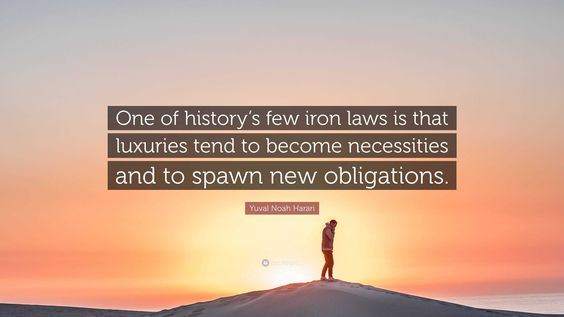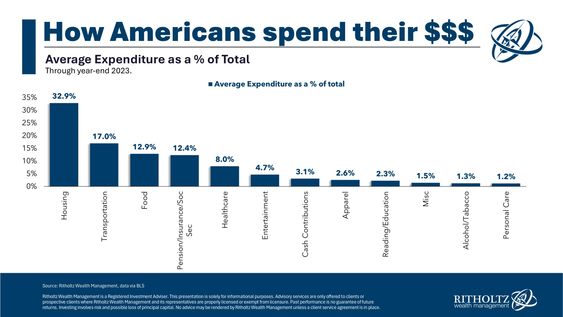When Luxuries Become Necessities
In today’s world, it’s easy to see how luxuries have become everyday necessities. Whether it’s the smartphone in your hand, the streaming service you binge-watch on, or the fast internet that keeps you connected, these items have moved from being considered “extras” to essentials in modern life. What once were indulgences for the wealthy have transformed into must-have items for almost everyone. But why has this shift occurred? What does it mean for society, and how can we adapt to a world where the line between luxury and necessity is becoming increasingly blurred?
This article will explore how luxuries become necessities, why this shift happens, and its broader implications on our finances, mental well-being, and the environment.
What Is a Luxury and What Is a Necessity
Before diving deep into the reasons behind the shift, it’s important to define the difference between a luxury and a necessity.
Traditional Definition of a Necessity
A necessity is something you need for survival or to meet basic living standards. Think of food, water, clothing, and shelter. These are items or services without which you cannot live a healthy, functioning life. In modern society, the definition of necessity has expanded to include electricity, transportation, and access to healthcare.

Traditional Definition of a Luxury
A luxury, on the other hand, is something that enhances your comfort or status but isn’t essential for survival. Luxuries tend to make life more enjoyable but are generally seen as optional. Examples include high-end cars, designer clothes, gourmet food, and vacations in exotic locations. Luxuries were traditionally seen as rewards or indulgences, reserved for those with enough disposable income to afford them.
However, the distinction between luxury and necessity has become more fluid over time.
How Luxuries of the Past Have Become Today’s Necessities
Many items we consider essential today were once seen as extravagant luxuries. As technologies evolve and become more accessible, what was once available only to the affluent eventually reaches the general population. Over time, these luxuries are no longer viewed as optional, but necessary for everyday life.
Historical Examples of Luxuries Turned Necessities
- Indoor Plumbing: There was a time when only the wealthy had access to indoor bathrooms and running water. Today, having indoor plumbing is a basic expectation in almost every home.
- Refrigerators: Before the refrigerator became a standard household appliance, people used ice boxes or root cellars to preserve food. Now, it’s unthinkable to live without refrigeration.
- Cars: Early in the 20th century, owning a car was a symbol of wealth. Now, particularly in many parts of the world, owning a vehicle is considered a necessity to get to work, school, or run errands.
- Telephones: When telephones were first introduced, they were seen as luxuries that only a few could afford. Fast forward to today, and smartphones have become essential tools for communication, business, and even safety.
Modern-Day Luxuries That Have Become Necessities
In recent years, certain technologies and services have followed this same path from being luxuries to necessities.
Smartphones
It’s hard to imagine life without a smartphone. Just two decades ago, mobile phones were considered a luxury for business professionals or tech enthusiasts. Today, smartphones have replaced landlines, computers, and even cameras in many ways. For most people, it’s difficult to function in modern society without one. From job applications to banking, socializing to navigating, smartphones are indispensable tools.
High-Speed Internet
While the internet started as a luxury for those who could afford the expensive equipment, it is now considered a fundamental necessity. During the COVID-19 pandemic, the need for reliable, high-speed internet became even more apparent as people worked from home, children attended school online, and access to services shifted to digital platforms. In many parts of the world, having access to the internet is critical for education, business, and even basic communication.
Streaming Services
Gone are the days when cable TV was the only entertainment option. Streaming services like Netflix, Disney+, and Hulu have become standard in most households. While initially seen as premium services, streaming platforms are now an essential part of the entertainment experience, offering on-demand content that has revolutionized how people consume media.
Ride-Sharing and Food Delivery Apps
Services like Uber, Lyft, and food delivery apps like DoorDash and Uber Eats were once considered conveniences that offered luxury and comfort. Today, they are embedded into the way many people live, especially in urban areas. They’ve become essential for those without a car or during times when public transportation is not readily available.

Why Do Luxuries Become Necessities
The shift from luxury to necessity doesn’t happen overnight. It’s usually a result of technological advancements, societal pressures, and changes in consumer behavior. Here are some of the key factors driving this transformation:
1. Technological Advancements
As technology improves, products that were once expensive and inaccessible become more affordable and widely available. Think about the first personal computers—they were clunky, expensive, and only owned by a few. Now, laptops and smartphones are ubiquitous, and manufacturers continue to lower costs as technology advances.
2. Social Expectations and Consumer Culture
Society plays a huge role in determining what is considered necessary. As more people adopt certain products or services, there is an increasing pressure to keep up. For example, once everyone in your social circle has a smartphone, it becomes almost impossible to participate fully in social activities without one. This social pressure drives demand, which in turn makes these products more accessible and eventually considered essential.
3. Convenience
In our fast-paced world, convenience is king. Many modern-day “necessities” make our lives easier and save us time. Online shopping, food delivery apps, and on-demand streaming services reduce the time and effort needed for routine tasks. As people grow accustomed to these conveniences, it becomes difficult to go back to traditional methods, thus making them essential.
4. Globalization
With globalization, luxuries that were once exclusive to a particular region or group are now available worldwide. Global supply chains and the internet have made it easier for people to access products and services that were once out of reach. As accessibility increases, so does the perception of these products as necessities.
The Economic and Social Impacts of Luxuries Becoming Necessities
The shift of luxuries to necessities has broad economic and social implications, affecting everything from personal finances to global markets.
1. Rising Cost of Living
As more luxuries become considered essential, the cost of living increases. In the past, having a smartphone or a high-speed internet connection was optional, but today, these are critical for participating in the workforce, accessing education, and staying connected. As the list of “necessities” grows, so do the costs associated with maintaining a modern lifestyle.
2. Increased Social Inequality
Not everyone can afford these new necessities, leading to greater economic disparities. People without access to high-speed internet, smartphones, or transportation services are often at a disadvantage when it comes to education, job opportunities, and even healthcare. This growing gap between those who can afford modern luxuries and those who cannot deepens social inequality.
3. Environmental Impact
The demand for new gadgets and technologies comes with an environmental cost. The production, shipping, and eventual disposal of these items create significant waste and environmental damage. As more luxuries become essential, the pressure on natural resources and ecosystems increases, raising concerns about the sustainability of such consumption patterns.
Psychological and Emotional Impacts
The pressure to keep up with these new necessities also affects mental health and well-being. Constant exposure to advertising, social media, and peer pressure can make people feel inadequate if they don’t have the latest tech or services.
1. Social Comparison and Inadequacy
Social media has exacerbated the desire to keep up with others. Seeing peers with the latest gadgets or indulging in luxury experiences can trigger feelings of inadequacy or the fear of missing out (FOMO). This pressure can lead to overspending or financial strain as people try to keep up with societal expectations.
2. Stress and Burnout
The need to stay connected 24/7 has also led to increased stress. The expectation to be always available—whether through email, messaging apps, or social media—creates a sense of urgency that can contribute to burnout and reduce overall well-being.
The Sustainability Challenge: Overconsumption of Necessities
As more luxuries become necessities, the challenge of overconsumption becomes more pressing. With a growing emphasis on convenience and comfort, people tend to buy more than they need, contributing to a throwaway culture where products are quickly discarded in favor of the latest version.
1. Environmental Costs
From smartphones to fast fashion, the demand for these products drives unsustainable practices. The fashion industry, for example, is one of the largest contributors to pollution, with millions of tons of textile waste ending up in landfills each year. Similarly, the production of electronic devices requires rare earth metals and generates e-waste that is difficult to dispose of responsibly.
2. Mindful Consumption
As consumers, there’s a growing movement toward mindful consumption, where people question the necessity of their purchases. Minimalism and the zero-waste lifestyle are becoming popular as people aim to reduce their carbon footprint and live more sustainably.
Reevaluating Our Relationship with Luxuries and Necessities
In a world where luxuries are rapidly becoming necessities, it’s important to step back and evaluate what we truly need. While technology and convenience are part of modern life, it’s essential to strike a balance


